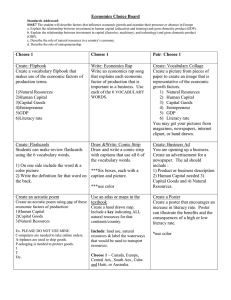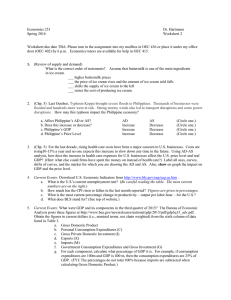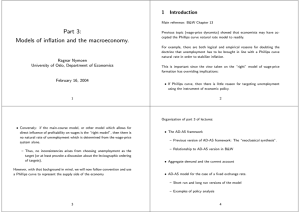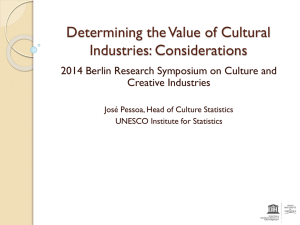The basic indicators and types of economic growth
advertisement
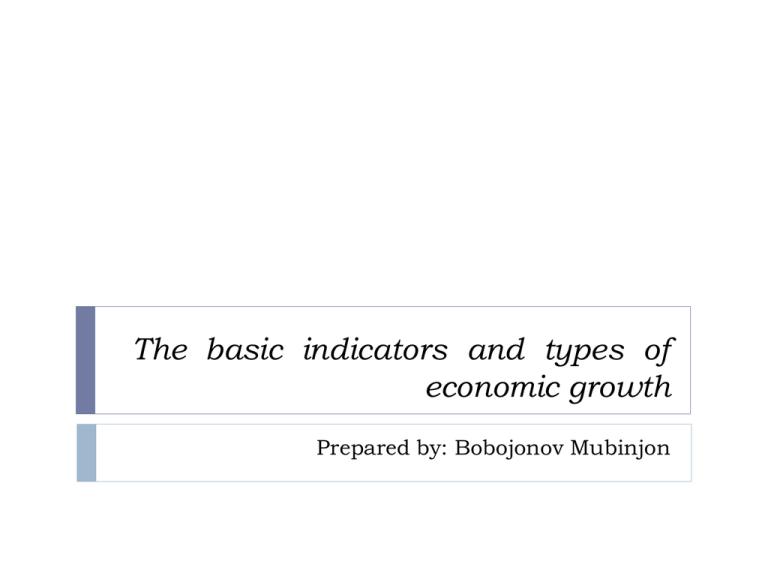
The basic indicators and types of economic growth Prepared by: Bobojonov Mubinjon Plan of work : 1. Concept of Economic growth 1.1 GDP of final goods 1.2 The comparison of last centuries’ economic growth with this century 1.3 The history of economic growth 2. Definition of economic Development 3. Key Indicators of economic growth 4. Extensive and Intensive in economic growth . Concept of Economic growth Economic growth is the increase in the amount of the goods and services produced by an economy over time. It is conventionally measured as the percent rate of increase in real gross domestic product, or real GDP. Growth is usually calculated in real terms, i.e. inflation-adjusted terms, in order to net out the effect of inflation on the price of the goods and services produced. In economics, "economic growth" or "economic growth theory" typically refers to growth of potential output, i.e., production at "full employment," which is caused by growth in aggregate demand or observed output. Economic growth refers to the rate of increase in the total production of goods and services within an economy. Economic growth increases the productivity capacity of an economy, thereby allowing more wants to be satisfied. A growing economy increases employment opportunities, stimulates business enterprise and innovation. A sustained economic growth is fundamental to any nation wishing to raise its standard of living and provide a greater well being for all. GDP of final goods Gross domestic product (GDP) is the monetary value of all final goods and services produced in Australia over a specific period of time, usually a year. It is the total value of production within the economy. The total value of production is the total value of the final goods or services less the cost of intermediate goods purchased. GDP at market prices (nominal GDP) measures the value of total production at the present price level. That is, GDP at market prices measures both the total physical volume of goods and services produced and the prices at which these goods and services are sold. GDP at market prices has considerable usefulness when measuring the growth rates and relative importance of different industries or sectors within the economy. History and comparisons of economic growth Human history teaches us, however, that economic growth springs from better recipes, not just from more cooking. New recipes generally produce fewer unpleasant effects and generate more economic value per unit of raw material.” (Henderson, D. 2007) This little introduction is a way to say that the more diversified an economy is the fewer side effects it will have to bare. A more sustainable and spread out use of the resources available in the economy. Back in the days countries tend to produce only the essentials for ‘survival’, most part of the economies were set to produce things like food, clothing, and houses. But nowadays, only small parts of economiesare used to produce the so called essentials. The reason behind this change is the industrial revolution in the “late 18th and early 19th centuries when major changes in agriculture, manufacturing and transportation had a profound effect on the socio-economic and cultural conditions in Britain. The changes subsequently spread throughout Europe and North America and eventually the World, a process that continues as industrialization. The onset of the Industrial Revolution marked a major turning point in human social history, comparable to the invention of farming or the rise of the first city states; almost every aspect of daily life and human society was eventually influenced in some way.” Economic development 'Economic development' is a term that economists, politicians, and others have used frequently in the 20th century. The concept, however, has been in existence in the West for centuries. Modernization, Westernization, and especially Industrialization are other terms people have used when discussing economic development. Although no one is sure when the concept originated, most people agree that development is closely bound up with the evolution of capitalism and the demise of feudalism Economic development originated in the post war period of reconstruction initiated by the US. During his 1949 inaugural speech President Harry Truman identified the development of undeveloped areas as a priority for the west. Economic Growth & development are two different terms used in economics. Generally speaking economic development refers to the problems of underdeveloped countries and economic growth to those of developed countries. Key indicators Gross Domestic Product.The total market value of all final goods and services produced in a country in a given year, equal to total consumer, investment and government spending, plus the value of exports, minus the value of imports. The Consumer Price Index (CPI) is the benchmark inflation guide for the U.S. economy. It uses a "basket of goods" approach that aims to compare a consistent base of products from year to year, focusing on products that are bought and used by consumers on a daily basis. The price of your milk, eggs, toothpaste and hair cut are all captured in the CPI. Extensive Growth, in economics, is based on the expansion of the quantity of inputs in order to increase the quantity of outputs, opposite to that of intensive growth. Thus, extensive growth is likely to be subject to diminishing returns. It is therefore often viewed as having no effect on per-capita magnitudes in the long-run[1]. Reliance on extensive growth can be undesirable in the longrun because it exhausts resources. To maintain economic growth in the long-run, especially on a per-capita basis, it is good for an economy to grow intensively; for example, by improvements in technology or organisation, thereby increasing the production possibilities frontier of the economy Thank you for your attention !




